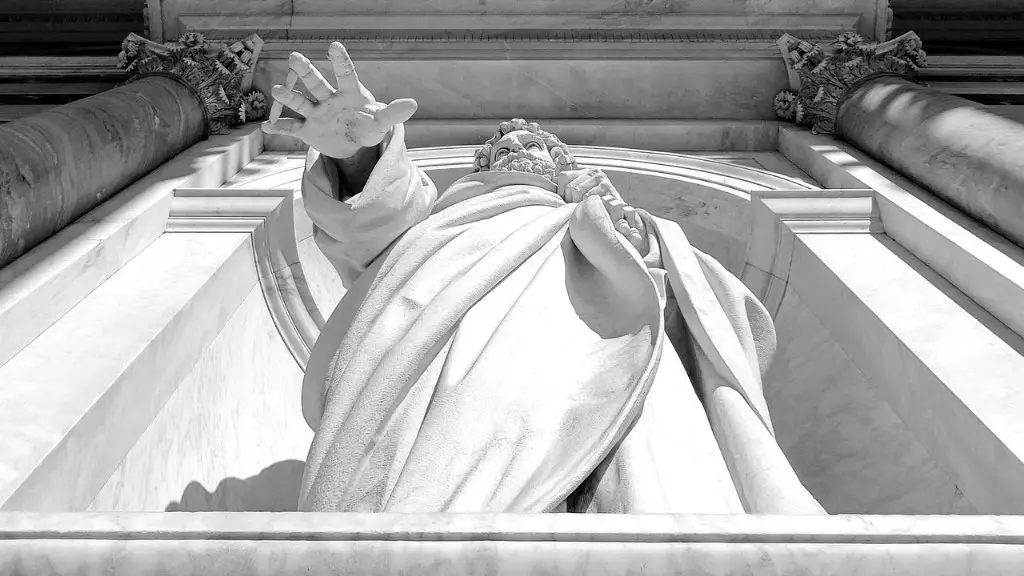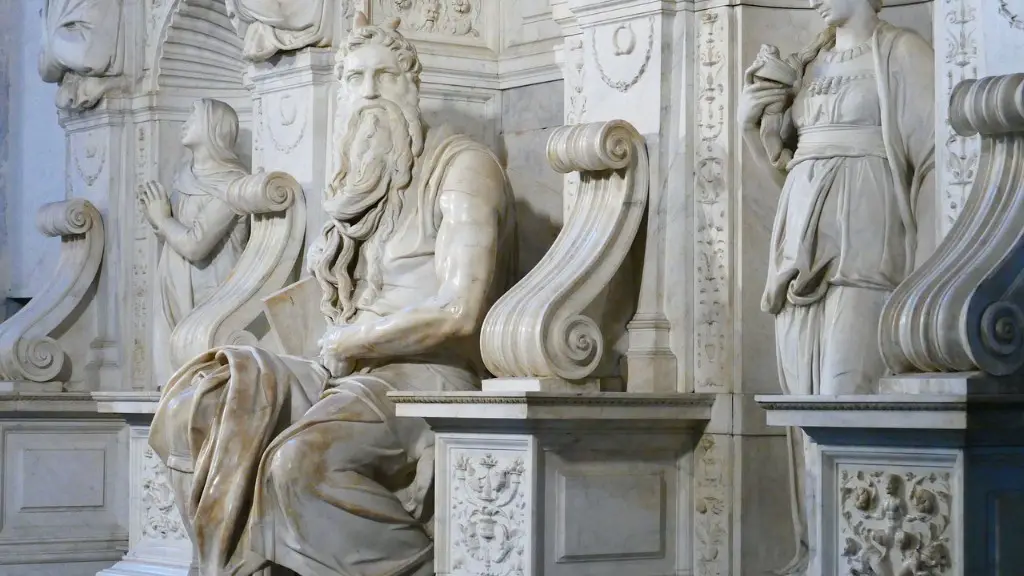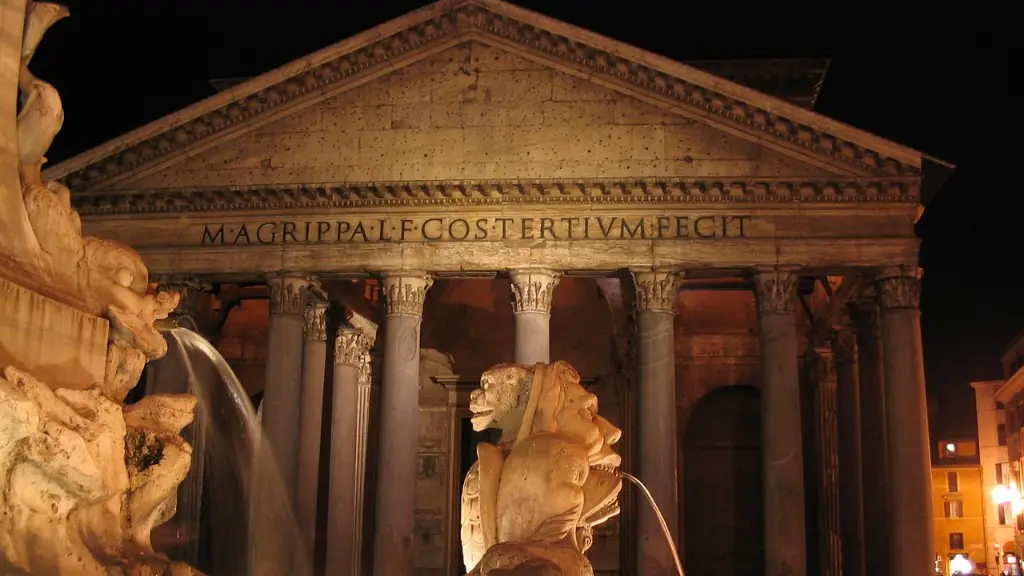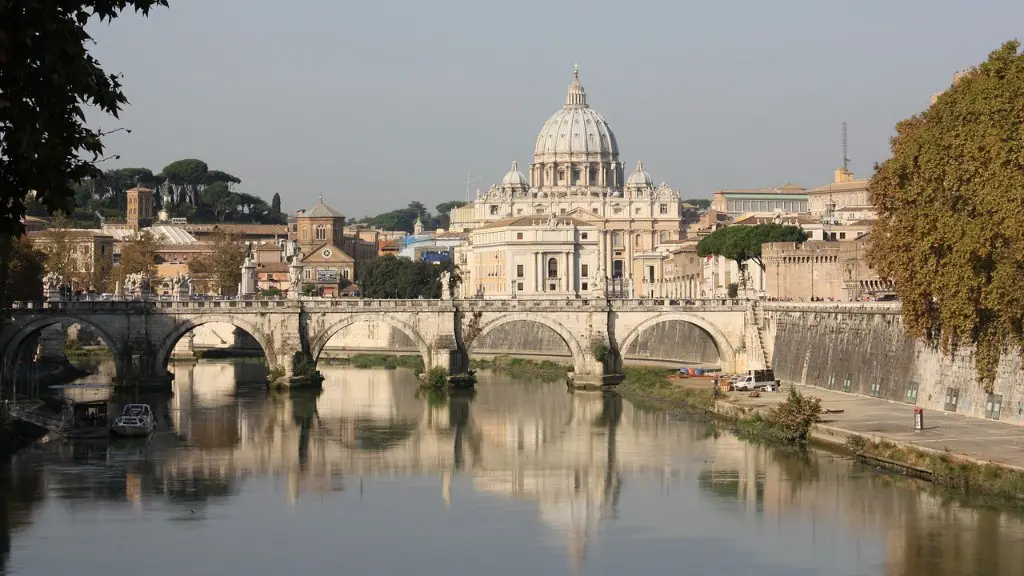The architecture of Ancient Rome was spectacular and diverse. The large number of iconic structures and monuments that have lasted over the centuries are testament to its greatness. The architecture of Ancient Rome was influenced by a number of factors including the Etruscan culture, the wealthy ruling classes, the availability of materials and the climate.
Architecture in Ancient Rome was comprised of a number of different styles. The most notable style was the triumphal arches, which are essentially large, grand gateways and doorways leading into cities and monuments. Examples of this style can still be found around Rome including the Arch of Constantine, which was built in honor of Emperor Constantine’s victory over Maxentius in 312 CE. This style was adopted from the Etruscans and was used to great effect in Ancient Rome.
The Colosseum is one of the most iconic structures ever built in the Ancient Roman Empire. This magnificent amphitheatre, which was built in 70-80 CE, could hold up to 50,000 spectators who would come to witness festivals and gladiator games. The design was also used to demonstrate power and prestige, as it showcased the engineering skills of Ancient Rome.
Baths and aqueducts were essential components of the Ancient Roman infrastructure. The Romans had a strong understanding of hydraulic engineering, allowing them to build baths and aqueducts that could transport large amounts of water over long distances. The Baths of Caracalla and the Aqua Claudia are two of the most impressive examples of these structures.
In addition to the traditional architecture, Ancient Rome also had a number of impressive gardens and villas. The wealthy ruling classes built grand villas in the Palatine Hill which allowed them to escape the hustle and bustle of city life. The gardens were meticulously landscaped and filled with statues, fountains and other decorative features.
The Pantheon is considered one of the most impressive architectural achievements of Ancient Rome. This building, which was built in 125 CE, is distinctive for its durable dome which has withstood nearly two thousand years of use and still stands strong. The Pantheon still stands today as a testament to the engineering skills of the Ancient Romans.
In conclusion, the architecture of Ancient Rome was truly magnificent and diverse. It was heavily influenced by the Etruscan culture and the wealthy ruling classes, and showcased the engineering skills of the Ancient Romans. The iconic structures and monuments, such as the Colosseum, the Pantheon and the Baths of Caracalla, still stand today and are a testament to the skill and ingenuity of Ancient Rome.
How Did the Romans Construct Buildings?
The Ancient Romans had highly developed construction techniques which allowed them to create impressive buildings and monuments. They used a wide variety of materials including sandstone, marble, travertine and volcanic rocks. In addition to the traditional building materials, the Romans also had a strong understanding of concrete which they used to create a variety of structures such as the Pantheon and the Colosseum.
The Romans also developed a number of innovative building techniques in order to create strong and durable structures. They were particularly adept at engineering and were able to create arches, vaults and domes which are still standing today.
The Romans were also skilled at designing public works and were responsible for the construction of many of the roads, bridges and aqueducts that were built throughout the Empire. These roads allowed for efficient transportation and communication throughout the Empire.
The design of the structures was also important to the Ancient Romans. Ornate decorations such as statues and fountains were often added to the structures in order to demonstrate prosperity and power.
What Influenced the Design of Ancient Rome?
The architecture of Ancient Rome was heavily influenced by the Ancient Etruscans. The Etruscans were a civilization that greatly influenced early Rome and can be seen in the use of their architecture, their arts and their alphabet. The Etruscan culture was particularly influential on the design of the triumphal arches and the baths.
The wealthy ruling classes also had a strong influence on the design of the urban areas and the grand villas. Wealthy citizens would build lavish villas around the Palatine Hill which would showcase their wealth and power.
The climate also had a significant impact on the design of Ancient Roman buildings. For example, the use of terracotta tiles on roofs was popular in Ancient Rome due to its ability to deflect heat and keep buildings cool in the summer months.
The availability of construction materials was also a major factor in the design of Ancient Roman architecture. The Romans utilized a wide variety of materials, such as stone and marble, which allowed them to construct grand and impressive structures.
What Technological Advances Did the Romans Make?
The Ancient Romans were pioneers in a number of technological advances. This allowed them to construct impressive structures such as the Colosseum and the Aqua Claudia Aqueduct.
The Romans had a strong understanding of engineering and were able to construct arches, vaults, and domes which could support large loads. This allowed them to construct massive structures such as the Pantheon and the Colosseum.
The Romans were also skilled in hydraulic engineering and were able to build impressive sewers, baths and aqueducts which could transport large amounts of water over long distances. The Aqua Virgo is one of the most impressive aqueducts which still stands today.
The Romans were also innovators in the construction of roads. They built roads which allowed for the efficient transportation and communication throughout the Empire. The famous Appian Way, which stretches from Rome to the Adriatic coast, is one of the most enduring examples of Ancient Roman engineering.
How Did Roman Architecture Impact the Modern World?
The designs and construction techniques of Ancient Rome have had a long-lasting impact on the architecture of the modern world. The impressive structures such as The Pantheon, the Colosseum and the Baths of Caracalla have withstood the test of time and continue to inspire awe in people to this day.
The use of the arch has been particularly influential on modern architecture and has been used to great effect in a variety of structures such as bridges, skyscrapers and monuments. In addition, many construction techniques such as the use of concrete and steel have been inspired by the engineering skills of the Ancient Romans.
The Ancient Romans also developed innovative building techniques such as the use of terracotta tiles on roofs which was a major factor in keeping buildings cool in the hot Roman summers. This practice has been passed down through the centuries and continues to be used in the construction of modern buildings.
The ornate designs of Ancient Rome have also been influential on modern architecture. The use of fountains, statues and frescos is still used today to decorate modern buildings. This is a testament to the skill and ingenuity of the Ancient Romans and the lasting impact they have had on the world.





